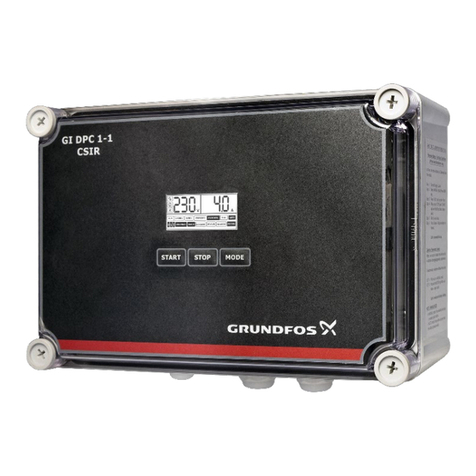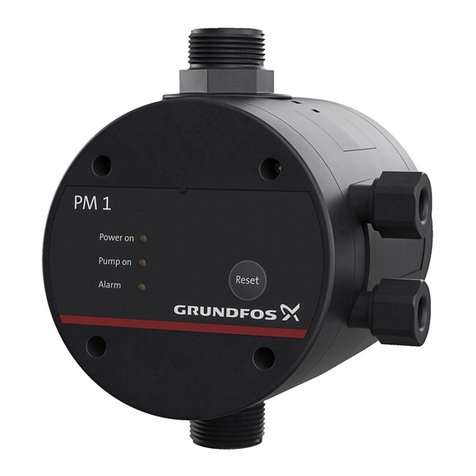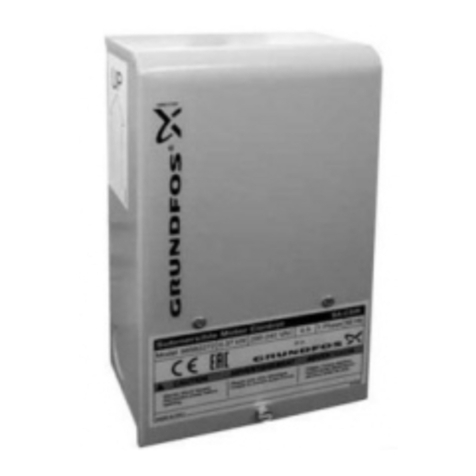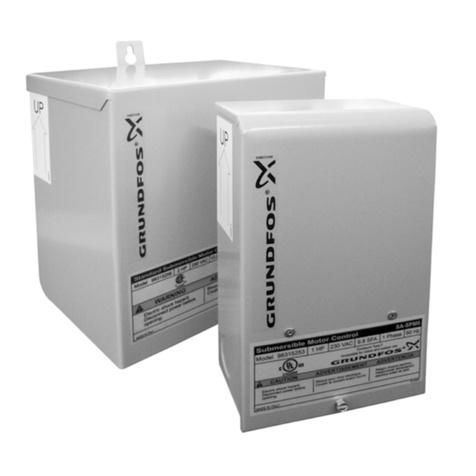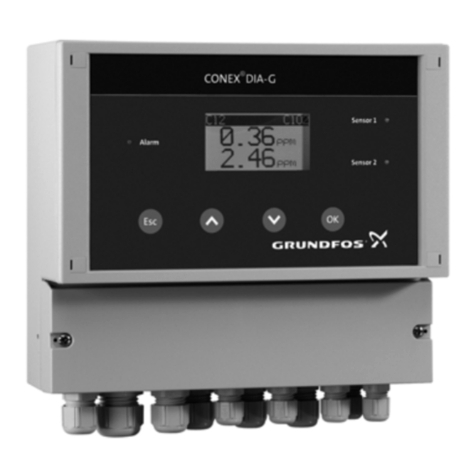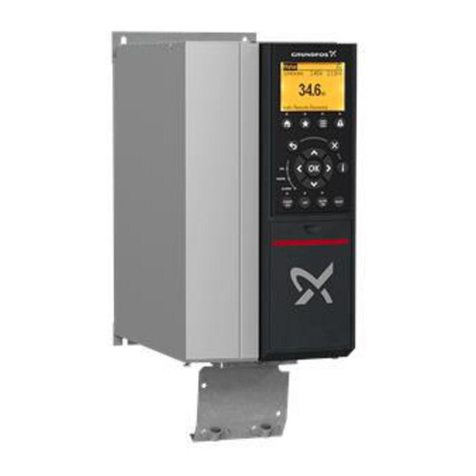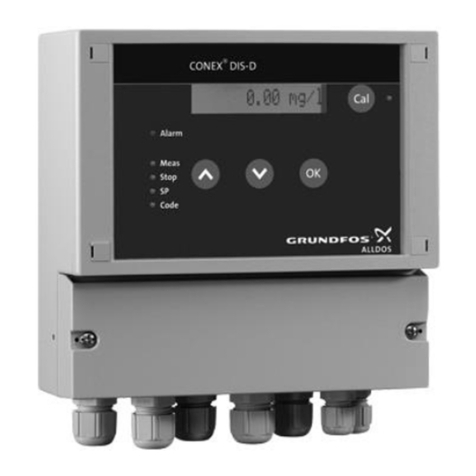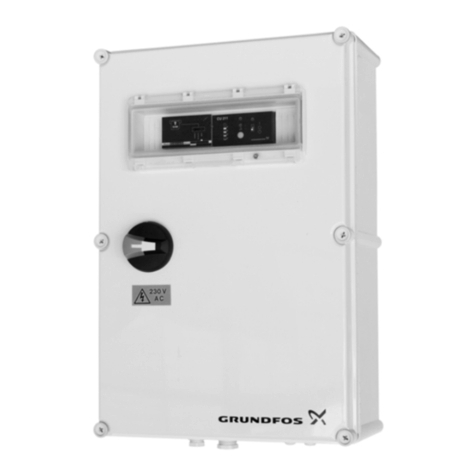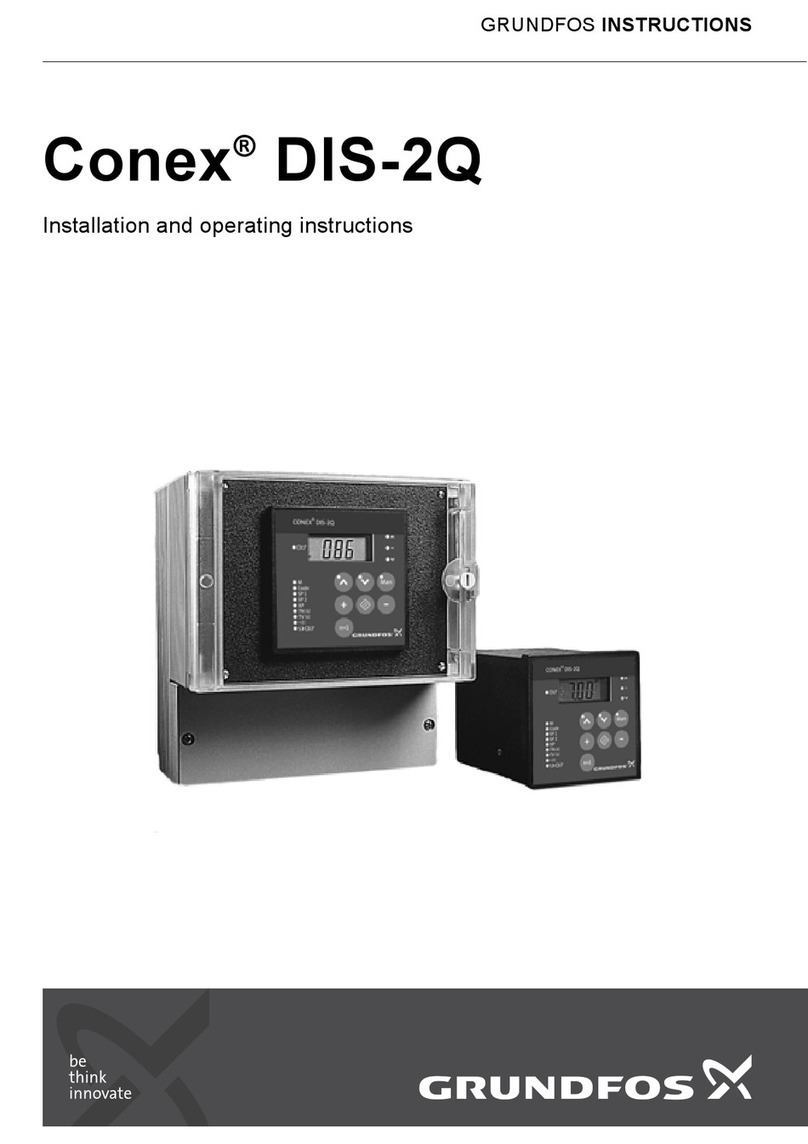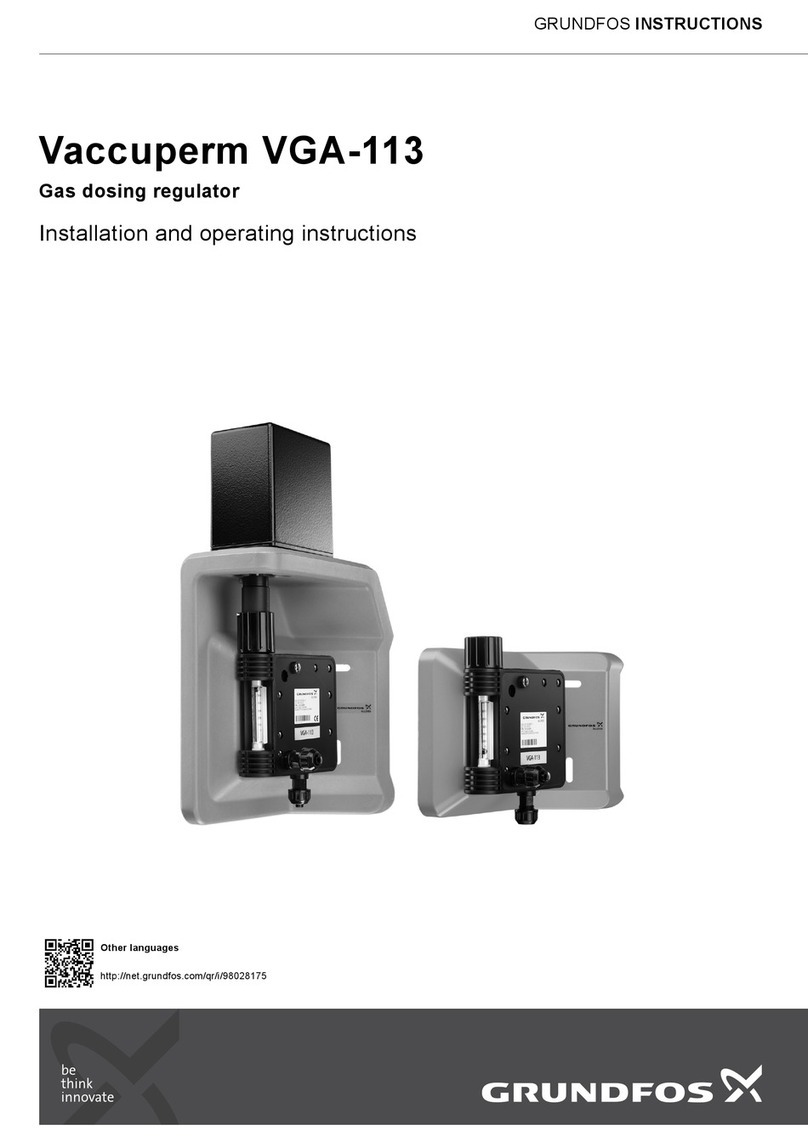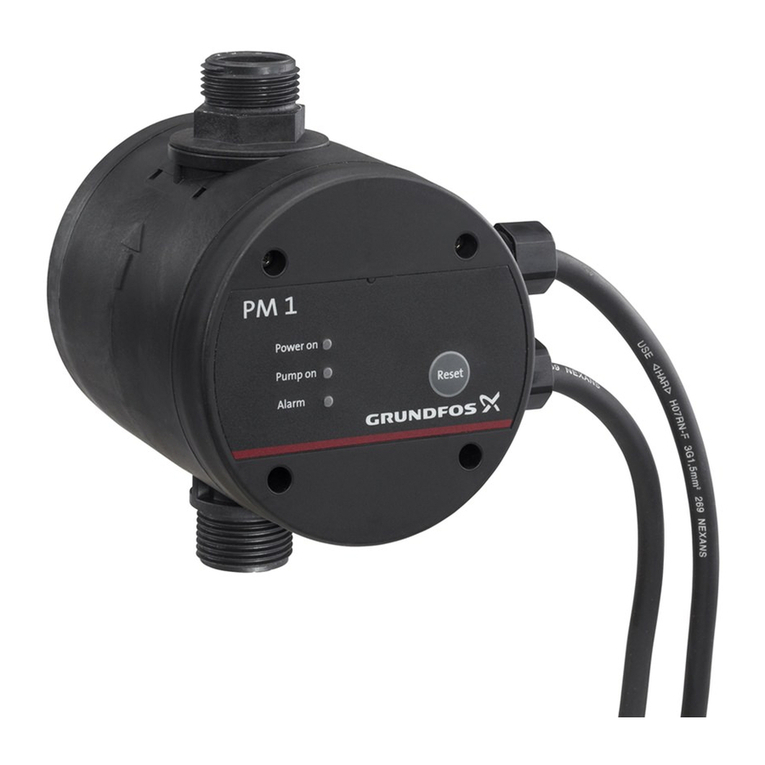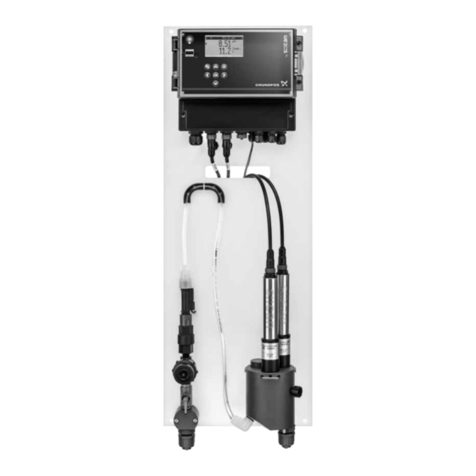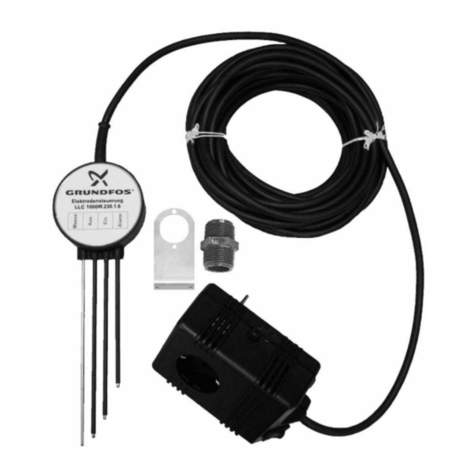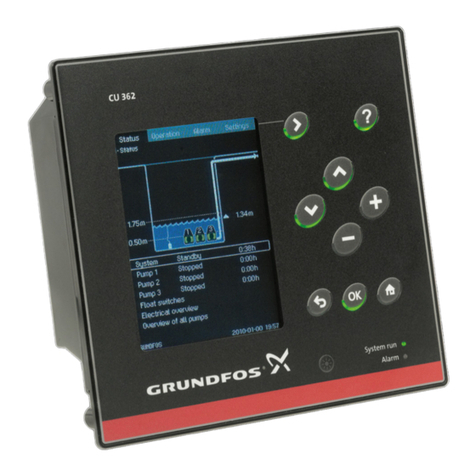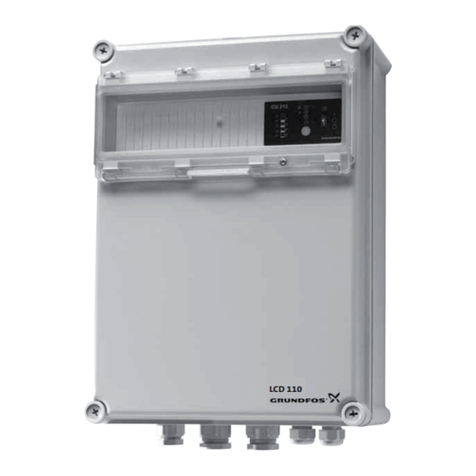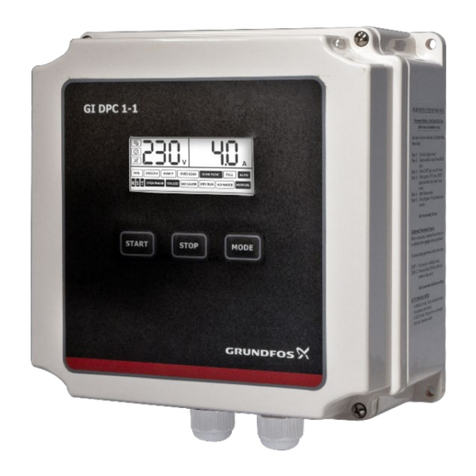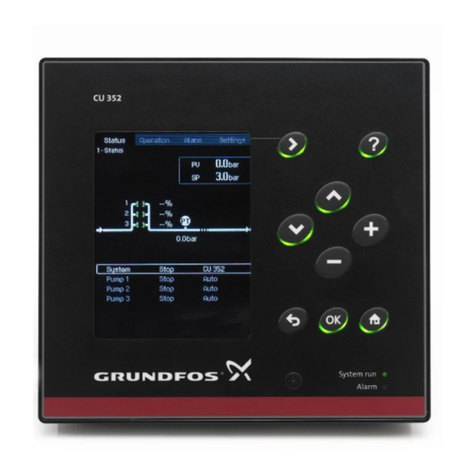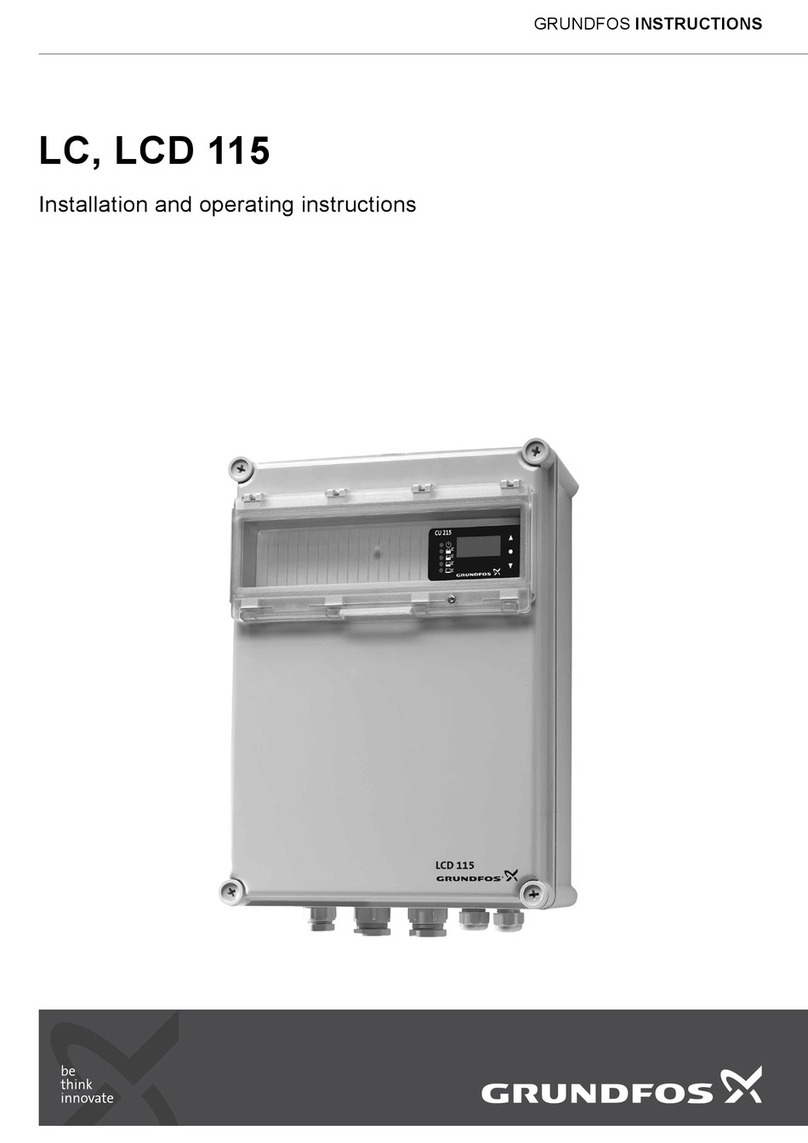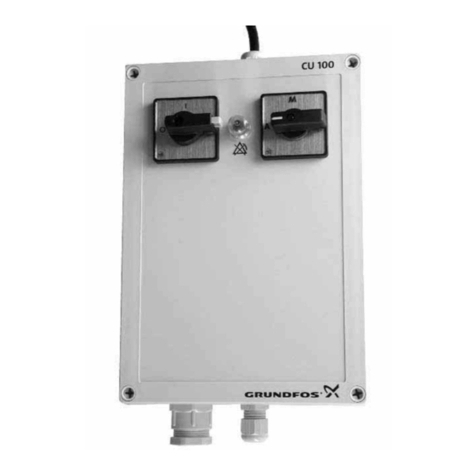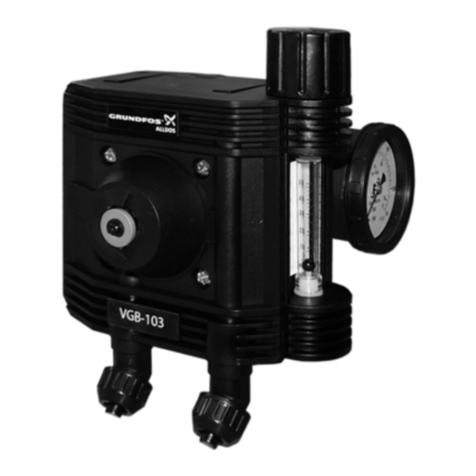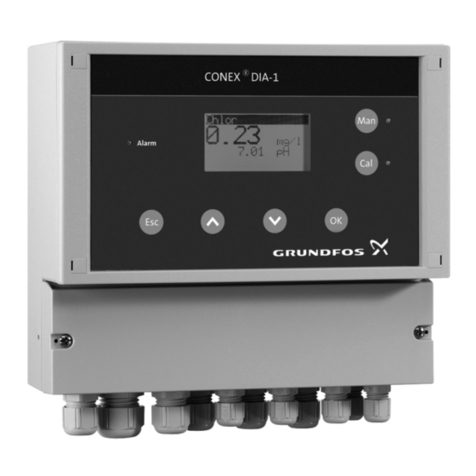
English (GB)
4
English (GB) Installation and operating instructions
Original installation and operating instructions
CONTENTS
Page
1. Of general interest
1.1 Structure of the documentation
The Grundfos Alldos device VGA-113 are a state-of-the-art
solution, which complies with recognised safety regulations.
Conformity with applicable standards, directives and laws has
been verified.
Nevertheless, certain risks which cannot be prevented by the
manufacturer are associated with the use of the system.
Purpose of this manual:
• Inform users of optimum use.
• Warn users of possible residual risks when using correctly and
identify measures that should be taken to avoid damage.
• Caution users against obvious misuse or inappropriate use
and inform them of the necessary care that must be taken
when operating the system.
1.2 About this manual
This manual contains the following standardised safety
instructions about possible residual risks:
Information about possible residual risks is provided:
• On warning signs displayed in the installation location.
• At the start of each section in this manual.
• Directly before any operating procedures that could involve
residual risks.
1. Of general interest 4
1.1 Structure of the documentation 4
1.2 About this manual 4
1.3 User/target groups 5
1.3.1 Responsibilities of the users 5
1.4 Responsibilities of the operator 5
1.5 Maintenance and service personnel 5
1.6 Correct usage 5
1.7 Inappropriate usage 5
2. Handling chlorine 5
2.1 Physical and chemical data 5
2.2 Safety advice for handling chlorine 6
2.2.1 Risks to health 6
2.2.2 Personal safety equipment 6
2.2.3 Rules of conduct 6
2.2.4 First aid in case of accidents 6
2.2.5 Transport and storage of chlorine 6
2.2.6 Pressure vessels and mountings 7
2.2.7 Chlorine extraction 8
2.3 Checking the tightness 8
2.3.1 Checking the chlorine solution lines and the diaphragm
non-return of the injector 8
2.3.2 Checking the tightness of the vacuum lines 8
2.3.3 Checking the tightness of pressure gas lines 8
2.4 Constructional requirements of chlorination plants 9
2.5 Principle function of the components 10
2.5.1 Vacuum regulator 10
2.5.2 Measuring tube 10
2.5.3 Rate valve 10
2.5.4 Differential pressure regulator (Option: VGA-117) 10
2.5.5 Vacuummeter (Option: VGA-117) 10
2.5.6 Injector 10
2.6 List of valid laws and regulations 11
2.7 Recommended diameter 12
2.7.1 Between vacuum regulator and dosing regulator 12
2.7.2 Between dosing regulator and injector 12
3. Technical Data 13
3.1 Type key dosing regulator VGA-113 13
3.2 General Data 13
3.2.1 Dosing flow 13
3.2.2 Accessories (not including) 13
3.3 Dimensioned drawings 14
3.3.1 Dosing regulator 14
3.3.2 Dosing regulator with servomotor 14
3.4 Electrical data for VGA-113 15
3.4.1 Servomotor with current input 15
3.4.2 Servomotor with feedback potentiometer 15
4. Installation 15
4.1 Transport and storage 15
4.2 Unpacking 15
4.3 Typical installations 15
4.4 Mounting 15
4.4.1 Dosing regulator 15
5. Commissioning 16
5.1 Preparations for commissioning 16
5.1.1 Vacuum connections 16
5.1.2 Electrical connections 16
5.2 Checks before commissioning 16
5.2.1 Checking the gas solution lines and the non-return
diaphragm of the injector 16
5.2.2 Checking the tightness 17
5.2.3 Checking the pressure connections (after changing gas
cylinder) 17
6. Operationh 18
6.1 Description of the device 18
6.2 Automatic adjustment of the dosing flow 18
6.2.1 Switching from automatic to manual adjustment of the
dosing flow; only with option servomotor 18
6.2.2 Switching from manual to automatic adjustment of the
dosing flow; only with option servomotor 18
6.3 Adjusting the Dosing Flow 18
6.3.1 Increasing the dosing flow 18
6.3.2 Decreasing the dosing flow 19
6.4 Reading the dosing flow 19
6.5 Switching on 19
6.6 Switching off 19
6.6.1 Emergency stop 19
6.6.2 Switching off while the system is running 19
6.7 Changing the gas cylinder 19
6.8 Possible faults 20
7. Maintenance 21
8. Disposal 21
Warning
These operating instructions are also available on
www.Grundfosalldos.com.
Prior to installation, read these installation and
operating instructions. Installation and operation
must comply with local regulations and accepted
codes of good practice.
Warning
If these safety instructions are not observed, it may
result in personal injury!
If these safety instructions are not observed, it may
result in malfunction or damage to the equipment!
Notes or instructions that make the job easier and
ensure safe operation.
